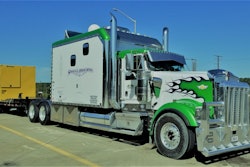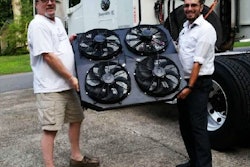New research released by the Diesel Technology Forum (DTF) shows the continued dominance of diesel power among commercial vehicles operating today on American roads. Three fourths of all commercial vehicles registered in the United States are powered by the fuel.
A state-by-state and regional analysis, too, shows some evidence that California’s in-use Truck & Bus Rule’s rolling deadlines have created what DTF executive director Allen Schaeffer dubs something of a “perverse incentive” not to upgrade to current technology, ever increasing in efficiency and thus emitting less and less volume of greenhouse gases and other emissions, such as the particulates and nitrogen oxides that once were a big part of diesel exhaust.
No more. Beginning with engines’ 2010 model year, diesels have been equipped with selective catalytic reduction (SCR) and particulate control technologies. These combine to achieve U.S. Environmental Protection Agency (EPA) emissions requirements for NOx emissions of no more than 0.20 grams per brake horsepower hour. This is in addition to particulate emissions requirements of no more than 0.01 g/BHP-hr.
Current emissions technology is present in nearly half of all registered commercial vehicles today, DTF’s new research revealed — 43% of the commercial fleet is using new-generation, post-2010 technology, representing a 6.8% increase over the same time last year.
A webinar conducted around the research October 22 included a state-by-state analysis, too, of the distribution of post-2010 engines among registered commercial vehicles. The state of Indiana showed the largest concentration of such diesels, with 65% of the registered fleet there operating post-2010 tech.
California and the entire Western region, meanwhile, were laggards among states. California’s registered fleet showed just 35% of all trucks running 2010 or newer engine technology (Washington: 39%, Oregon: 43%, Idaho: 37%, Nevada: 41%, Arizona: 32%).
That’s in spite of large-market California and its Air Resources Board’s required retirement of pre-2007 engine emissions technology in its Statewide Truck & Bus Rule, with a final deadline for all trucks and buses to be powered by post-2010 engines by year 2023. During the Q&A on the webinar, DTF Executive Director Allen Schaeffer said CARB’s deadlines, he believed, had created what he called something of a “perverse incentive” for truck owners at this point not to upgrade their fleets, even as post-2010 engines have improved year by year in fuel efficiency.










